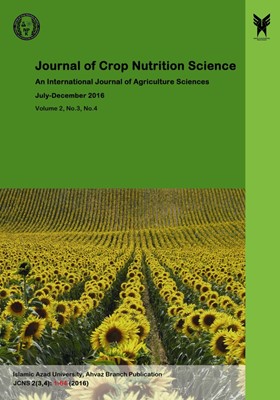-
-
List of Articles
-
Open Access Article
1 - Evaluation Effectiveness of Chemical and Biological Fertilizers Combination on Corn (Zea mays L.) Yield
Nastaran Ajami -
Open Access Article
2 - Evaluation of Different Levels of Nitrogen Fertilizer on Agronomic Traits of Corn (Zea mays L.) Genotypes
Marziyeh Izadian -
Open Access Article
3 - Assessment Nutrient Absorption of Sugarcane (Saccharum Officinarum L.) Genotypes under Saline Situation
Mahsa Mansuri Mahmod Shomaeli -
Open Access Article
4 - Response of Some Bread and Durum Wheat Genotypes to Different Levels of Nitrogen in South West of Iran
Atosa Enayat Shahram Lack Adel Modhej -
Open Access Article
5 - Yield and Nitrogen Fertilizer Efficiency Analyzes in Different Planting Dates of Canola (Brassica napus L.) under Warm and Dry Climate Condition
Abdolamir Rahnama Alireza Jafarnejadi Mohammad Khayat -
Open Access Article
6 - Effects of Different Rates of Selenium Fertilizer and Cow Manure on Selenium Uptake in Festuca arundinacea
Hadi Chamheidar Rozbeh Farhoudi
-
The rights to this website are owned by the Raimag Press Management System.
Copyright © 2021-2025







